One of our central promises is that our analytics system is actionable. We’ve designed our tool to be user-friendly and, more than that, newsroom friendly. This is what that means in practice.
Actionable editorial analytics: a fishy tale about follow-up stories
July 23, 2025 by Em Kuntze
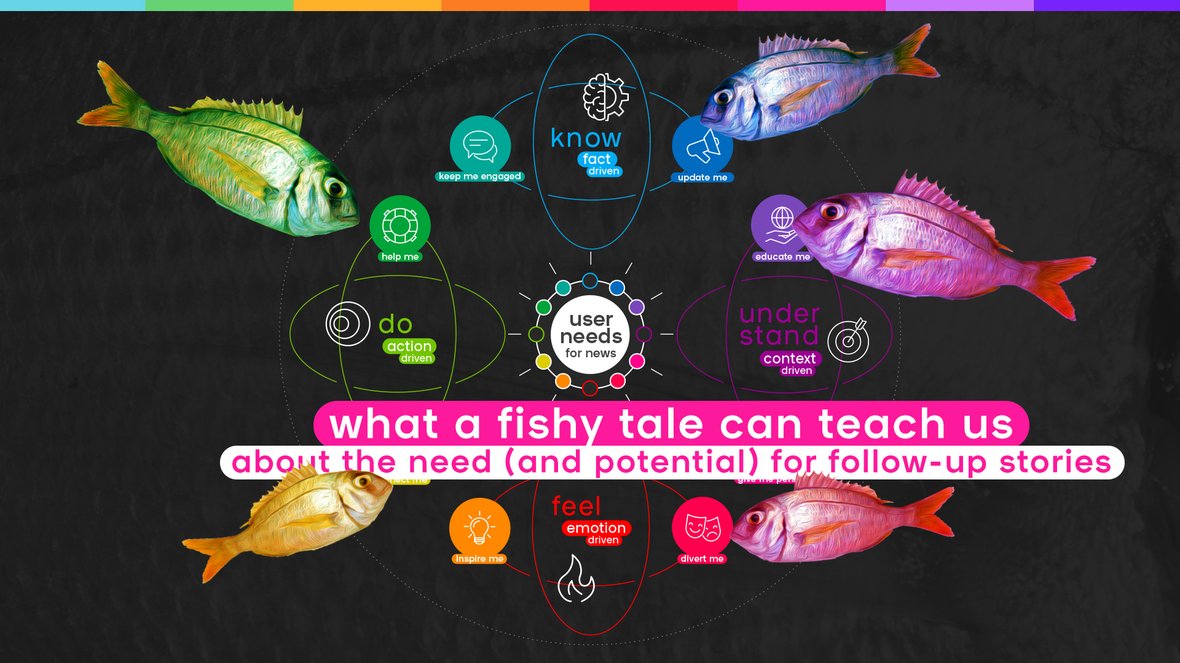
At the beating heart of smartocto is our system of actionable notifications, which channel all the data we collect about your content performance into tips and nudges about ways to optimise your output. Editors are free to accept these - or not (though obviously we’d recommend they do).
They alert you to actions you can take now in order to maximise and elongate the impact of your story later. Our promise is that this approach ensures you and your team’s hard work is channeled efficiently. It helps you work smarter and sharpens your focus.
That’s great and everything, but obviously the question is: does it work? Will it help reduce the number of spinning plates?
Well, we’re going to answer that by telling you a story about a fish.
Bear with us.
This fish will help explain why the notifications are important and should act as a cautionary tale for publishers who don’t want to end up like the fish in question: newly taxidermised and on display in a museum.
Let’s begin.
First, the story
A few years back, just after the new year, about 30 kilometres out from the coast of the Netherlands, a fisherman hauled in his catch. Among the usual suspects was a fish he didn’t recognise. Naturally, he posted a picture on Twitter to see if the fisherman community there could help. He posited that maybe it was a bream.
It wasn’t long before Ecomare - a research institute - tweeted, saying it sounded like that was in the ballpark, but that it would need some extra time to be certain.
Eventually, they replied saying that they were pretty sure it was a Common Sea Bream. But, although the name makes it sound plentiful, the unusual thing was that that species - unlike Wild Bream or Sea Bream - typically makes its home in the Canary Islands. That’s quite a detour.
“It’s a tasty fish”, Ecomare concluded. They then suggested that the fisherman offer it to the National History Museum.
And there ended the story.
But therein began the problem.
The fish out of water:
This article isn’t unusual.
News organisations report on similar stories all the time. Something happens, a few column inches are published, maybe it goes on Facebook or it will find its way on Google Discover, and that’s that.
The difference here was that we’d just started working with several newsrooms on the User Needs Project. Although the Dutch regional publication Omroep Zeeland wasn't formally a part of it, we had coincidentally run several sessions with the editorial team there on how to write better stories and to help them understand how different user needs help engage their audience more effectively.
This was shortly after they’d published this - so our conversation was serendipitous bycatch.
Right away it was clear that there was more that needed to be done with this story.

184 comments on a Facebook post? That’s worth noting. The average engagement for Omroep Zeeland at the time was 93.
The smartocto system noted it for sure. It sent out a notification:
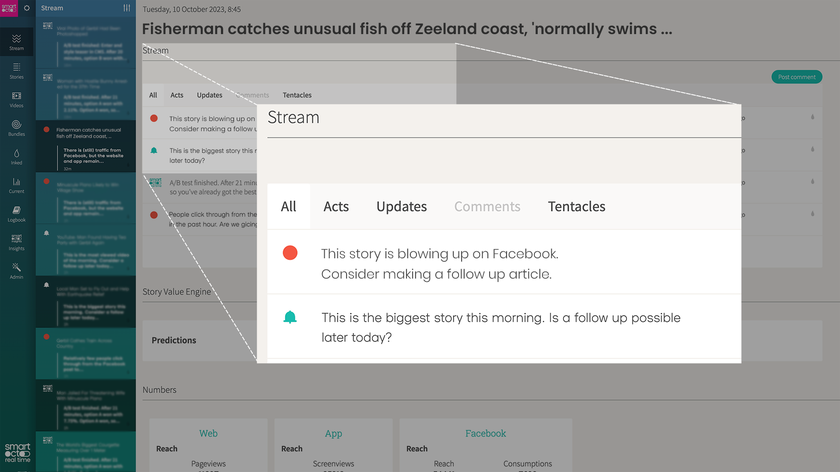
And, back on Facebook, people were starting to leave all kinds of interesting feedback.
- One user on Facebook speculated that due to all the wind farms at sea, all underwater animals have lost their orientation.
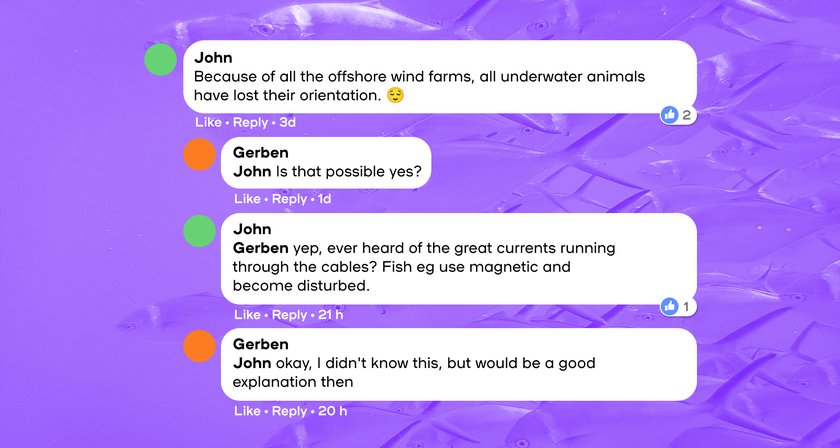
This calls for a Give me perspective or Educate me follow up piece - is there any truth to these claims? Do fish really get disoriented from underwater cabling or from wind farms?
Another reaction states this is probably much ado about nothing:
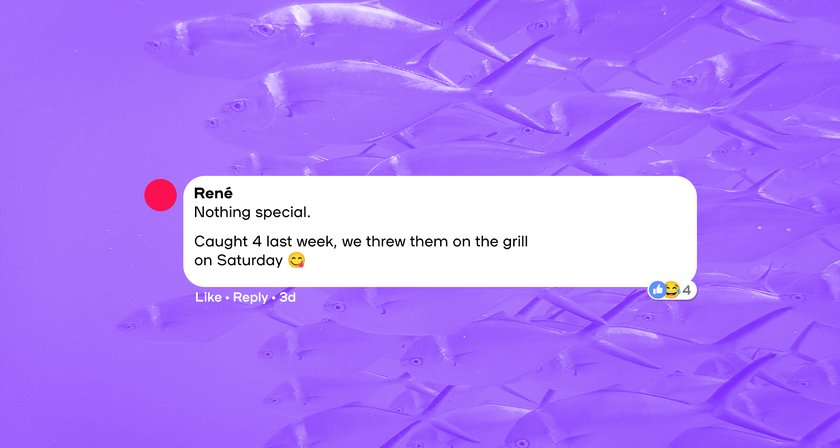
This is clearly a direct invitation to publish some recipes for sea bream
Next, people started talking about exactly what kind of fish it was…. Red snapper? Bream? Red Gurnard?
How about a fish quiz? Could you identify this mystery fish?
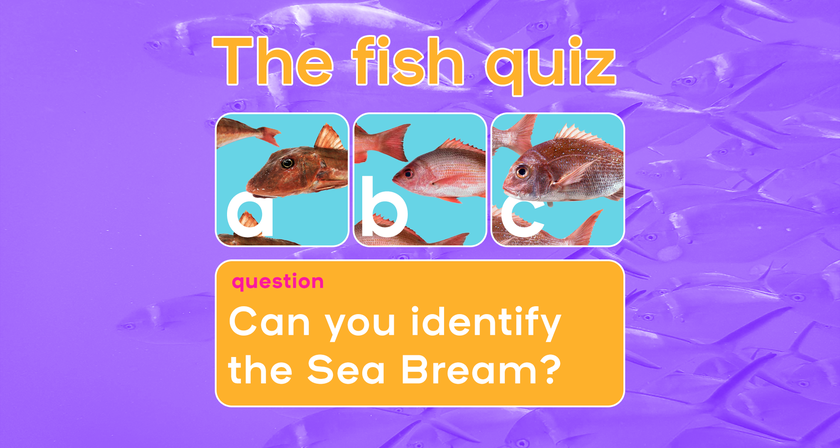
And, someone then asked, why is it that there are so many red fish, anyway?
Educate me: what makes fish red? Is it the same kind of thing as why flamingos are pink?
The story had reported that Ecomare had advised the fisherman to offer the fish to the National History Museum in Rotterdam. But why?
Is it because there are a bunch of famous dead animals in the museum? It turns out there are: a sparrow that got killed because it inadvertently knocked over several thousand domino tiles during the 2005 Domino Day ‘world record’; a seagull that’s there because a goalkeeper once kicked it out of the air with a ball during a soccer game. Does the Common Sea Bream have the celebrity chops to join these hallowed specimens? All of this would make a brilliant 'Educate me' or 'Divert me' article.
But, none of these stories got made. The story of the disorientated bream was destined to become an orphan.
It’s a shame because there’s so much potential to be had in the above ideas.
Engagement - and active engagement through comments - is something that shouldn’t be ignored. If people are bothered enough to start a conversation about something, it’s an indication that they may be interested in a further aspect of the story.
From fish to ferries: what happened next
But, missed opportunities don’t have to be considered failures: they’re learning opportunities. And, Omroep Zeeland fully embraced this:
As a newsroom with a strong local ethos, a story that it published on the PSD boat (a ferry) which returned to Zeeland did very well with readers. And, once again, it did so well, that smartocto pinged out a notification suggesting a follow up.
“Every inhabitant of Zeeland has been on that boat at one point or another, so our news article generated many visitors. That’s why we created a follow-up story detailing where the other PSD boats had gone. That in turn resulted in many reactions on our website and on Facebook. And based on those responses, we also made a third article, which again scored well. I am convinced that the second and third articles would not have come about without tips from smartocto.”

Matthew Gideonse omroep zeeland
We’re learning, too
When we talk about how important it is to ‘make every story count’, it’s not just a nice tagline. It’s at the core of what we do. Our mission is to help editors extract every ounce of value in their content.
It’s too late for the fish, but you’re just in time. Happy catching!
you might find these useful too...
using user needs to optimise your content strategy
How do you integrate user needs into your workflow - and is it worth the effort? Here's how the good folk at Omroep West did it.
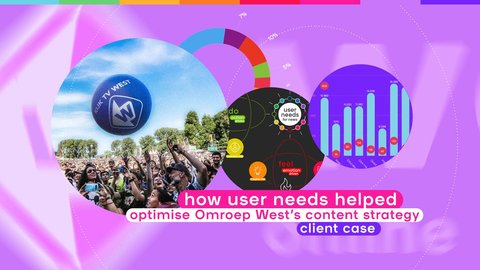
the strategic power of baseline reports
If data informs your editorial decisions, the central question should always be: what works and what doesn’t? But there’s an even more fundamental one to answer first. What does success actually mean?
